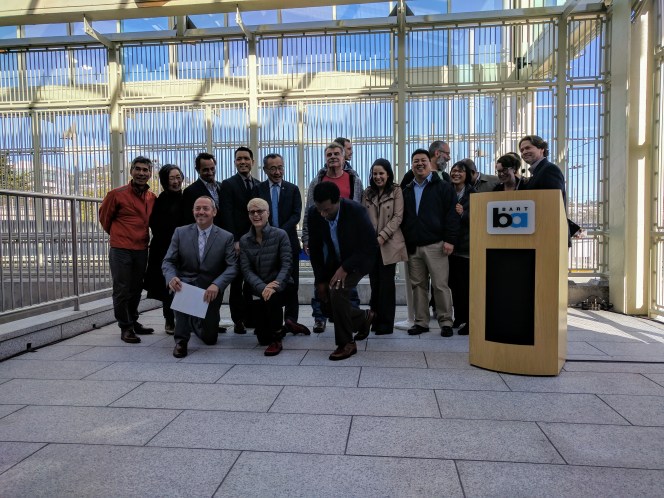BART officials held a ceremony this morning to mark the completion of an $18.7 million package of improvements to the Balboa Park station.
The roof of the station, previously open to the elements--and lots of pigeons--is now enclosed with glass and the crossbeams are covered in stainless steel cladding, so the station's mezzanine is bathed in direct and reflected sunlight. There's also a steel and glass head-house (seen below) to let in even more light while keeping out the area's notorious dampness and wind.
The station, used by 25,000 riders daily, had been partially boarded up since May of 2016, when the project overhaul began.
There are many other changes as well, including a new bridge over the BART tracks to provide easier pedestrian flow between BART and a new Muni platform for the K Ingleside and J Church lines.
"The main point is to improve connections with Muni and make a safe passageway to Ocean Avenue," explained Mike Wong, Project Manager for BART. "Before this, riders had to navigate on pavement that was inches from moving [Muni] trains."
There's also a wider pathway from the Ocean Ave. side to the Geneva side of the station. Previously, the only way to get between the streets (without entering the paid-fare area) was on a passageway on the westside of the station along the ramps of I-280. That pathway has stairs; it is inaccessible to people in wheelchairs.
BART also unveiled a memorial wall plaque honoring community advocate Anthony G. Sacco, as seen below:
The station improvements also include new folding gates that can be raised and lowered to secure the system when it closes for the night.
There's also better lighting, way-finding, real-time displays, and the addition of a mid-station entrance.
While all these improvements are, no doubt, welcomed by riders, access to inbound K and J trains is still wanting. Passengers still have an awkward pathway to navigate to the platforms located on the east side of the Muni yards, along San Jose Avenue.
And there's the matter of I-280, with its on and off ramps, which makes for poor pedestrian and bicycle access to the station. But hopefully ongoing work by SFMTA can start to address some of those deficiencies. For a little more on long-term hopes to cap I-280 and move SFMTA's adjacent yard and maintenance facility, so that the area around the station can be developed in the future, check out Streetsblog's story from 2016.
A couple more pics of the station improvements below:






